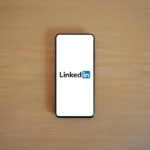When I first heard about the concept of social listening, I was intrigued. The idea that we could tap into real-time customer sentiments and trends seemed almost like magic. Driven by curiosity, I embarked on a journey to create my own social listening dashboard. Here’s a step-by-step account of my experience, complete with the tools and metrics I used to gain invaluable customer insights.
Getting Started: The Basics of Social Listening
Social listening involves tracking conversations around specific topics, keywords, or brands across social media platforms and other online spaces. It’s like having your ear to the ground, capturing the pulse of your audience. The first step in this journey was understanding what I wanted to achieve. For me, it was about gauging customer satisfaction and identifying emerging trends in real-time.
Choosing the Right Tools
With so many tools available, selecting the right one felt daunting. After some research and recommendations, I narrowed it down to three popular options: Hootsuite, Brandwatch, and Sprout Social. Each has its strengths, but I chose Hootsuite for its user-friendly interface and comprehensive features.
Hootsuite: My Tool of Choice
Hootsuite integrates various social media channels into one dashboard, making it easier to monitor multiple platforms simultaneously. Setting it up was straightforward. Here’s how I did it:
- Account Creation: I signed up for an account on Hootsuite’s website.
- Connecting Social Media Accounts: I linked my Twitter, Facebook, and Instagram accounts to the dashboard.
- Setting Up Streams: I created streams for each social media platform, focusing on specific hashtags, keywords, and mentions related to my brand.
Identifying Key Metrics
Knowing what to measure is crucial. For my dashboard, I focused on the following key metrics:
- Mentions: How many times my brand was mentioned.
- Sentiment Analysis: The emotional tone of the mentions (positive, negative, neutral).
- Engagement: Likes, shares, comments, and retweets.
- Reach: The potential audience size for the mentions.
- Trends: Emerging topics and hashtags related to my brand.
Building the Dashboard
With Hootsuite set up and my key metrics identified, it was time to build the dashboard. Hootsuite’s analytics feature allowed me to customise my dashboard by dragging and dropping different widgets. Here’s a breakdown of the widgets I used:
- Mentions Widget: Displayed the number of mentions across all platforms.
- Sentiment Analysis Widget: Showed a pie chart of positive, negative, and neutral mentions.
- Engagement Widget: Tracked likes, shares, comments, and retweets.
- Reach Widget: Estimated the potential audience size for my mentions.
- Trends Widget: Highlighted trending topics and hashtags related to my brand.
Fine-Tuning and Customisation
Building the dashboard was just the beginning. I quickly realised the importance of fine-tuning and customising it to suit my needs better. I adjusted the tracking parameters, added filters to exclude irrelevant mentions, and set up alerts for specific keywords.
Real-Time Insights
One of the most exciting aspects of my social listening dashboard was the ability to gain real-time insights. By monitoring the dashboard regularly, I could respond quickly to customer feedback, address issues, and capitalise on positive mentions. For instance, when a customer praised my product on Twitter, I was able to thank them promptly, enhancing their overall experience.
Advanced Features: Going Deeper
As I grew more comfortable with my dashboard, I explored some of Hootsuite’s advanced features. For example, I used Hootsuite Insights to conduct deeper analysis, such as tracking competitor mentions and identifying key influencers in my industry. This helped me understand my competitive landscape better and build relationships with influential figures.
Reflections and Learnings
Creating a social listening dashboard was an enlightening experience. It taught me the importance of being proactive rather than reactive. By monitoring customer sentiments and trends in real-time, I felt more connected to my audience and better equipped to meet their needs.
Bringing It All Together
The journey of creating a social listening dashboard is both exciting and rewarding. It starts with understanding your goals and selecting the right tools. Building the dashboard involves identifying key metrics and customising it to suit your needs. The real magic lies in the real-time insights that allow you to respond swiftly to your audience and stay ahead of trends.
For anyone looking to understand their customers better and enhance their brand’s online presence, a social listening dashboard is an invaluable tool. It’s not just about listening—it’s about engaging, learning, and growing with your audience.











